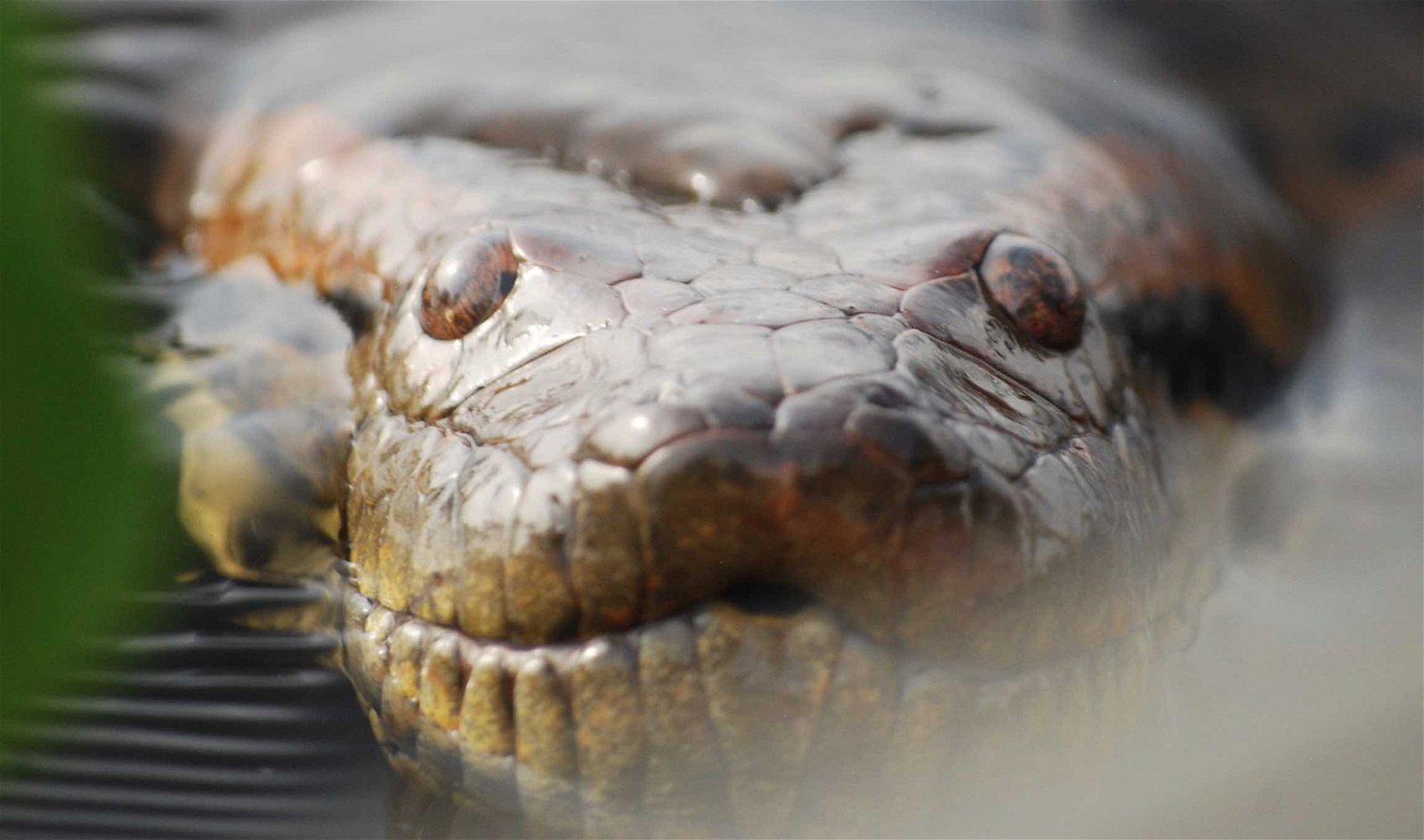A massive new species of anaconda that could potentially be the largest currently in existence has been uncovered in the Amazon rainforests of Ecuador, according to newly published findings that expand our understanding of these massive snakes and their habitat.
The discovery was made during fieldwork by a team of researchers with the University of Queensland, who traveled to the region in search of an undocumented variety of northern green anaconda spoken of by its indigenous residents.
According to accounts shared by the Waorani people of the Ecuadorian Amazon, stories of a variety of large anacondas said to exist in the region were compelling enough to warrant a ten-day expedition to the Baihuaeri Waorani Territory’s Bameno region.
Anacondas are large aquatic snakes that thrive throughout rivers and wetlands in parts of South America east of the Andes. Currently, four species are recognized in the Eunectes genus, the largest of which, the Green Anaconda (Eunectes murinus), lives mostly in tropical regions like the Amazonian basin and the parts of the Orinoco River.
Stories of particularly large anacondas have existed for more than a century. In 1906, explorer Percy Fawcett made his first in a series of expeditions to South America on behalf of the Royal Geographic Service to map a region of jungle in Brazil near the Bolivian border. During his travels, Fawcett claimed to have observed several animal species undocumented by science, the most impressive—and questionable—of them being an alleged encounter with a massive, 62-foot-long anaconda he and his companions claimed to have shot and killed.
Fawcett’s claim was met with derision from the scientific community at the time. However, during his travels, he was told of even larger snakes in the Araquaya and Tocantin basins that locals called Dormidera, meaning “sleeper,” due to the sounds of the massive reptiles were said to make while sleeping.
Such stories are still met with skepticism, although the invitation from the Waorani to come to see the snakes they said were rumored to be among the world’s largest seemed almost too good for the University of Queensland team to pass up.
Joining hunters in boats as they paddled through the Bameno region’s rivers, University of Queensland biologist Bryan Fry said the team went for several days before encountering “several anacondas lurking in the shallows, lying in wait for prey.”
Fry said that one of the largest anacondas they encountered, a female, measured a remarkable 20.7 feet in length. However, during their travels Fry and the team were told of even larger snakes that reportedly measured as much as 24.6 feet that had been seen in the same area.
Based on their research, a new paper detailing the team’s findings identifies “two distinct clades within Eunectes murinus, revealing two species as cryptic yet genetically deeply divergent.”
“This has led to the recognition of the Northern Green Anaconda as a separate species (Eunectes akayima sp. nov), distinct from its southern counterpart (E. murinus), the Southern Green Anaconda,” the team writes.
“Additionally, our data challenge the current understanding of Yellow Anaconda species by proposing the unification of Eunectes deschauenseei and Eunectes beniensis into a single species with Eunectes notaeus.”
The team and their research will also be featured in a forthcoming National Geographic television series.
In addition to highlighting just how little is actually known about the range of fauna that exist in remote regions like the Amazon, the team says its findings have “vital implications for the conservation of these iconic reptile species,” as well as “the need for revised strategies to conserve the newly identified and reclassified species.”
The team’s new paper, “Disentangling the Anacondas: Revealing a New Green Species and Rethinking Yellows,” was published on February 16, 2024, in MDPI.
Micah Hanks is the Editor-in-Chief and Co-Founder of The Debrief. He can be reached by email at micah@thedebrief.org. Follow his work at micahhanks.com and on X: @MicahHanks.

